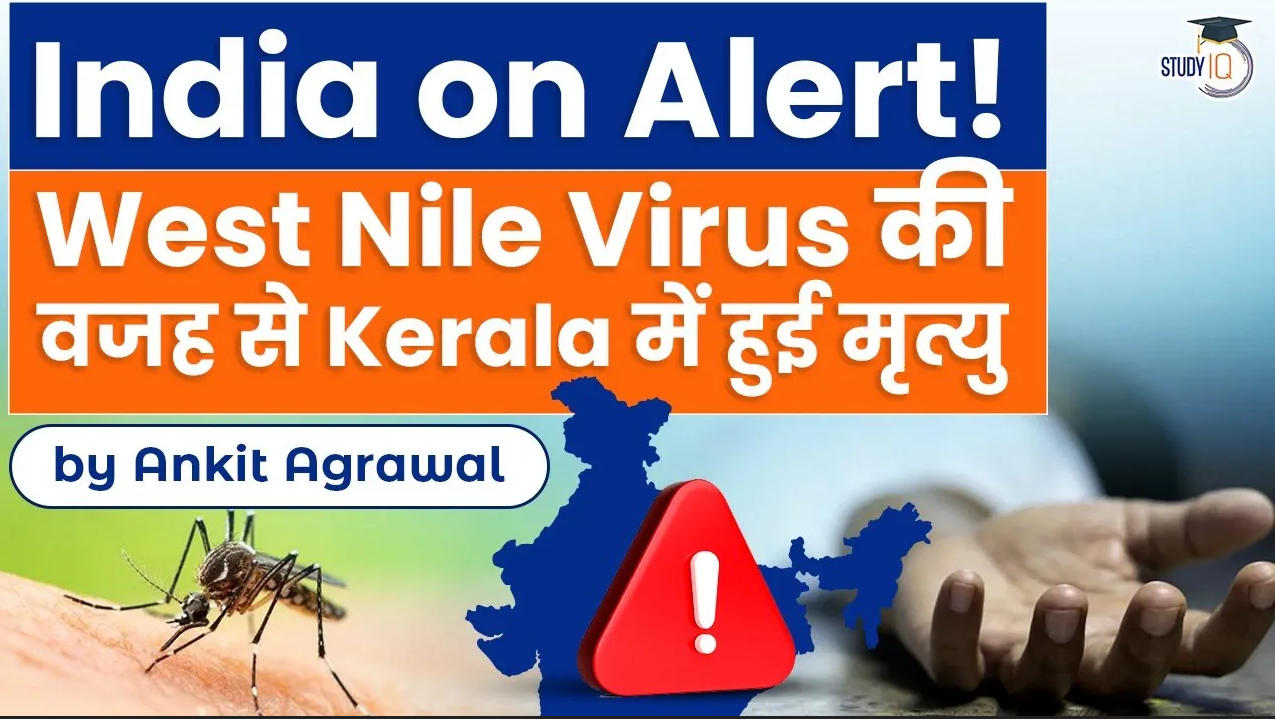Table of Contents
What has happened?
- Kerala on Sunday reported the death of a person due to West Nile fever in what was the first fatality attributed to the vector-borne disease in recent times.
- The victim, Puthanpurackal Joby (47), was a native of Panancheri in Thrissur district.
- The state health department has sounded an alert in the wake of the death.

- Officials said Joby developed fever and other symptoms on May 17 and was treated at various hospitals.
- Two days ago, he was admitted to the government medical college in Thrissur, where doctors
- diagnosed him with West Nile fever.
- The virus was first reported in the state in Alappuzha in 2006 and then in Ernakulam in 2011.
About the virus
- The West Nile Virus is a mosquito-borne, single-stranded RNA virus.
- According to the WHO, it is “a member of the flavivirus genus and belongs to the Japanese Encephalitis antigenic complex of the family Flaviviridae”.
- Culex species of mosquitoes act as the principal vectors for transmission.
- It is transmitted by infected mosquitoes between and among humans and animals, including birds, which are the reservoir host of the virus.

- “Mosquitoes become infected when they feed on infected birds, which circulate the virus in their blood for a few days.
- The virus eventually gets into the mosquito’s salivary glands.
- During later blood meals (when mosquitoes bite), the virus may be injected into humans and animals, where it can multiply and possibly cause illness,” the WHO says.
Human to Human transmission?
- WNV can also spread through blood transfusion, from an infected mother to her child, or through exposure to the virus in laboratories.
- It is not known to spread by contact with infected humans or animals.
- According to the US Centre for Disease Control and Prevention (CDC), it does not spread “through eating infected animals, including birds. Always follow instructions for fully cooking meat”.
- To date, no human-to-human transmission of WNV through casual contact has been documented, says the WHO.
symptoms
- The disease is asymptomatic in 80% of the infected people. The rest develop what is called the West Nile fever or severe West Nile disease.
- In these 20% cases, the symptoms include fever, headache, fatigue, body aches, nausea, rash, and swollen glands.
- Severe infection can lead to encephalitis, meningitis, paralysis, and even death.
- “It is estimated that approximately 1 in 150 persons infected with the West Nile Virus will develop a more severe form of disease….
- Recovery from severe illness might take several weeks or months. Some effects to the central nervous system might be permanent,” says the CDC.
- It usually turns fatal in persons with co-morbidities and immuno-compromised persons (such as transplant patients).
Detection of WNV
- The virus was first isolated in a woman in the West Nile district of Uganda in 1937.
- It was identified in birds (crows and columbiformes like doves and pigeons) in the Nile delta region in 1953.
- Before 1997, WNV was not considered pathogenic for birds, but then, a more virulent strain caused the death in Israel of different bird species, presenting signs of encephalitis and paralysis.

- In 1999, a WMV strain, believed to be one circulating in Israel and Tunisia, reached New York producing a large outbreak that spread across the United States and eventually across the Americas, from Canada to Venezuela.
- WNV outbreak sites are found along major bird migratory routes.
- Today, the virus is found commonly in Africa, Europe, the Middle East, North America, and West Asia.
Pareventive measures?
- This vector-borne disease can be prevented by protecting one-self from mosquito bites.
- Other steps are wearing clothing that acts as a barrier to exposure to bites, reducing breeding sites, covering water storage containers,
- Eliminating puddles and drainage of places where water accumulates, eliminating unusable containers where water pools, and controlling garbage in yards and gardens.
Q) The toxicity of which among the following leads to liver cirrhosis?
- Iron
- Mercury
- Copper
- Lead
Latest Burning Issues | Free PDF


























 WhatsApp
WhatsApp